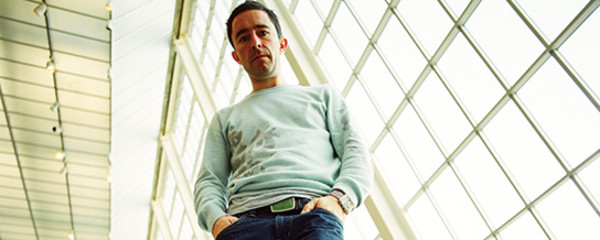Cinematic Orchestra’s Artist Tips
Despite the proliferation of bedroom rockers with cracked laptop copies of Logic, there are plenty […]
Cinematic Orchestra’s Artist Tips
Despite the proliferation of bedroom rockers with cracked laptop copies of Logic, there are plenty […]

Despite the proliferation of bedroom rockers with cracked laptop copies of Logic, there are plenty of producers recording the old-fashioned way–in studios. While there’s nothing particularly old-fashioned about soundtrack-jazz-loving Jason Swinscoe, his latest filmic opus as Cinematic Orchetra, Ma Fleur (Domino)–which features guests as disparate as “Rescue Me” singer Fontella Bass and Lamb’s Louise Rhodes–was made in more than a few studios around the world. We quizzed him on the most important things to remember when recording in multiple spaces. Above all, he says the most crucial factor is maintaining the right vibe. “A nice space, good acoustics, good studio engineer, and cool people,” are essential, he explains. Here’s what else he recommends.
Sample Rates/Calibration
I was recording various instruments at a studio in London. I brought all my gear for mapping out the session. The system at that studio wasn’t calibrated; rather, I hadn’t worked out what this actually meant. When I returned back to my studio excited to check out all the new recordings, they were at the wrong pitch and the wrong speed. I had the pleasure and fun of transferring all the files–many from 48Hz to the old-skool 44.1Hz.
Digital File Formats
It isn’t as necessary to be so critical with which file type you bring or take from the studio. WAV, AIFF, or even SDII are all still prevalent across both platforms. WAV does, however, seem to be the standard.
Space
When I move from studio to studio, it has become essential for me to record as clean and purely as possible. No reverb, unless it is just in the cans for the musicians or the vocalists. Otherwise, coloration, reflection, and rogue frequencies appear in the sounds and can give you some problems later on. It is always important to choose a good space for the specifics of the instrumentation you are recording.
Microphones
My engineer brings much of his own gear, especially microphones. This helps in keeping the sound consistent. Specific microphones have shown to be great at capturing specific qualities in my various acoustic instruments. When you bring your own mics and refine your techniques, then you’ll have a fighting chance at capturing whatever you are hearing. The other part of this process is working out what good mic pre-amps the studio has invested in.
Hard Disk
Always bring your own. Make sure you take the session and the files away with you. It can be important as a reminder of what was actually happening. You will need to have a version of the software that the session was recorded onto (in pro studios, usually Pro Tools). If you don’t, then make notes on where a good take was, a specific riff you heard, or start points that need matching. If you just take the files away from the session, then make sure all are bounced down starting at bar one. This way you won’t drive yourself crazy trying to match up takes.

